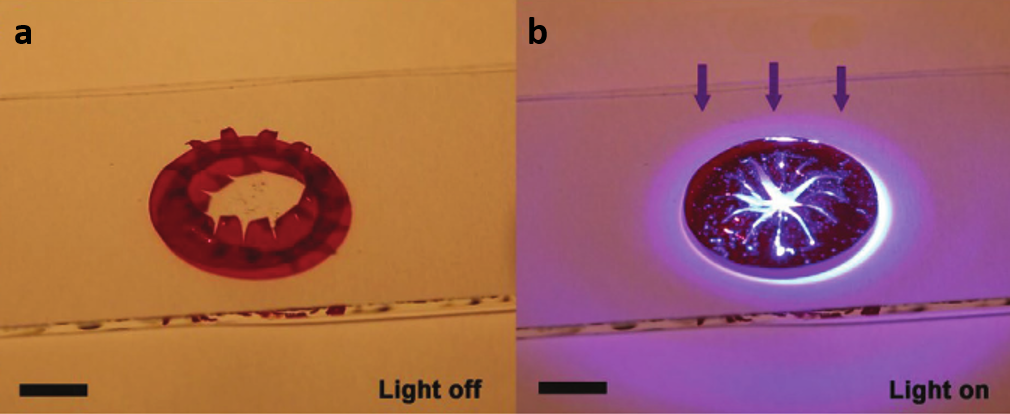
Bioinspired Responsive Materials
Advanced Science

866 views
0 likes
You will need to sign in before you can comment or like.
Material scientists have always been intrigued by the complexity of biological material, and often this has led to the development of revolutionary functional materials. Biological materials mainly possess three important qualities that make them inspirational for researchers around the globe. Firstly, they possess superior mechanical strength due to hierarchical arrangement of alternative soft and hard structural components across a variety of length scales. For example, this feature gives bones improved strength and fracture resistance. Secondly, such materials are functional and often can perform multiple functions e.g. self-cleaning ability of lotus leaves. Finally, one of the most striking feature of biological materials is their ability to respond or adapt to their environment, which is very challenging to mimic in artificial materials. Examples of natural adaptive systems include self-healing of bones and vascular tissue, colour change in some animals like chameleons, switching of adhesion in Gecko feet, light-responsive movement of the iris, flowers etc.
Recently, bioinspired artificial materials, which are capable of stimuli responsive movements, are getting lot of attention from the scientific research community. These materials are referred as stimuli-responsive actuators. Their movement can be triggered by different stimuli such as heat, humidity, pH, light, electricity, magnetic field, etc.
 Light being so ubiquitous, with high degree of spatial and temporal control, makes an interesting choice as a stimulus. Light triggered actuators are the materials which can deform (change their shape) reversibly under light irradiation. The Iris in our eyes opens widely under dark light and constricts in presence of bright light, to control the amount of light passing inside the eye.
Light being so ubiquitous, with high degree of spatial and temporal control, makes an interesting choice as a stimulus. Light triggered actuators are the materials which can deform (change their shape) reversibly under light irradiation. The Iris in our eyes opens widely under dark light and constricts in presence of bright light, to control the amount of light passing inside the eye.
The figure depicts an artificial iris, made from liquid crystal material, which regulates its aperture size according to intensity of irradiated light. Similar to iris in our eyes, the artificial iris possesses large aperture size under low intensity light and the aperture size decrease under irradiation with higher light intensity. Other bioinspired light responsive actuators mimicking the motion of caterpillar, opening and closing of flowers etc. have also been synthesized and demonstrated in laboratories. Although, study of these light-based actuators is driven mostly by scientific curiosity, yet many future applications in tuneable optics and specialised and versatile robotics can be envisioned.
Whenever we discover something new or encounter a problem, we find nature already has found a solution and mastered it in its applications.
Comments
Bozo
Good!